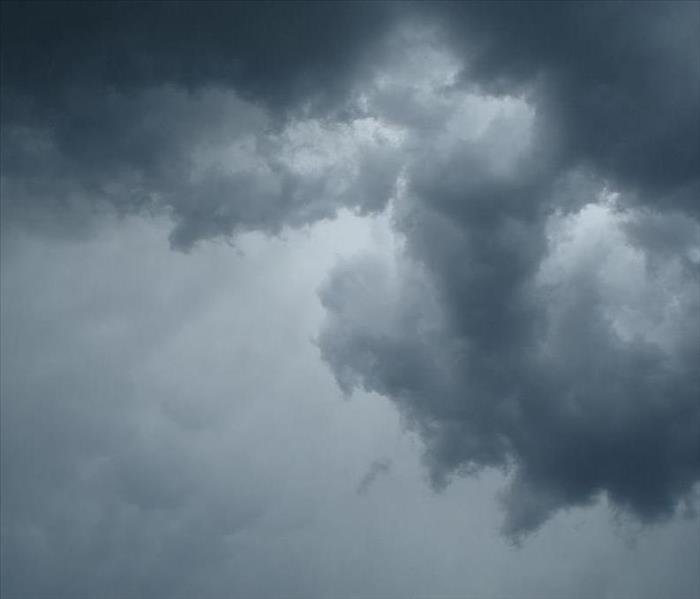Storm Readiness 101
1/16/2024 (Permalink)
As leaders in the restoration industry, we know firsthand the amount of damage that a storm can do to your home. Addressing the damage as quickly as possible is key to preventing further damage from occurring. We wanted to share some of the most important areas of your home that can be affected by storm damage, so you know where to check afterward.
- Basement – Areas of your home that are underground are some of the spots that are the most prone to water damage following a storm. Check around the edges of your basement floor and walls for signs of moisture. Make sure that drain spouts are properly angled away from your home and that there are no areas where water can pool next to your house.
- Foundation – Similarly to basements, your home’s foundation is particularly threatened by water damage after storms. Water from the outside can seep into cracks in your foundation and weaken it over time. Double-check check there is no standing water or signs of moisture in your concrete, and make sure that your sump pump is functioning properly.
- Crawlspaces – Water can pool in areas underneath your home and cause significant damage to the structural components, like mold and rotting wood.
- Windows – Over time the seals on your windows can degrade and strong storms can crack windows and window frames, allowing water to get into your home.
- Roof – Probably the most prone to storm damage, wind can damage shingles and throw broken tree branches all over your home. As one of the main sources of protection from the outside elements. It is crucial to inspect your roof after a storm. Ensure there are no leaks and remove any debris that could further damage your home. Check for any signs of moisture in your attic as well as this could be a sign that there is a hole somewhere you might’ve missed.
- Gutters – Strong winds and falling branches can damage your gutters or even completely rip them off the side of your house. Your gutters are essential in preventing water from getting into your home and directing it away from your home’s foundation. Make sure that your gutters are in good condition and free from any debris that may clog them.
While storm damage may not always be 100% preventable, hopefully, these tips can help you prevent any further damage from happening, and if you do happen to find any signs of damage to your home after a storm. Our technicians are here to help. We’re available 24/7, 365 days a year, so don’t wait, give us a call and let us know what we can do for you.





 24/7 Emergency Service
24/7 Emergency Service
